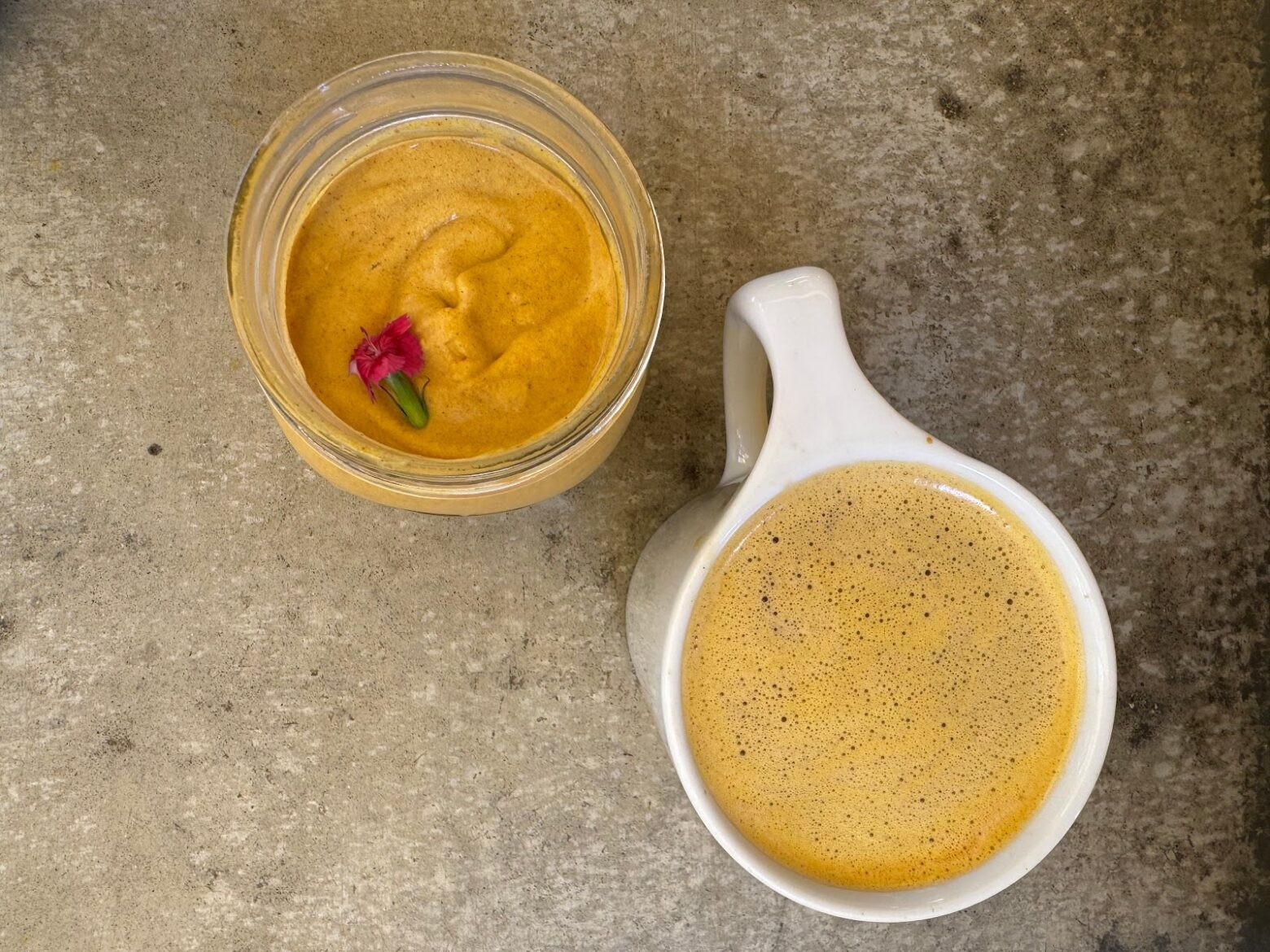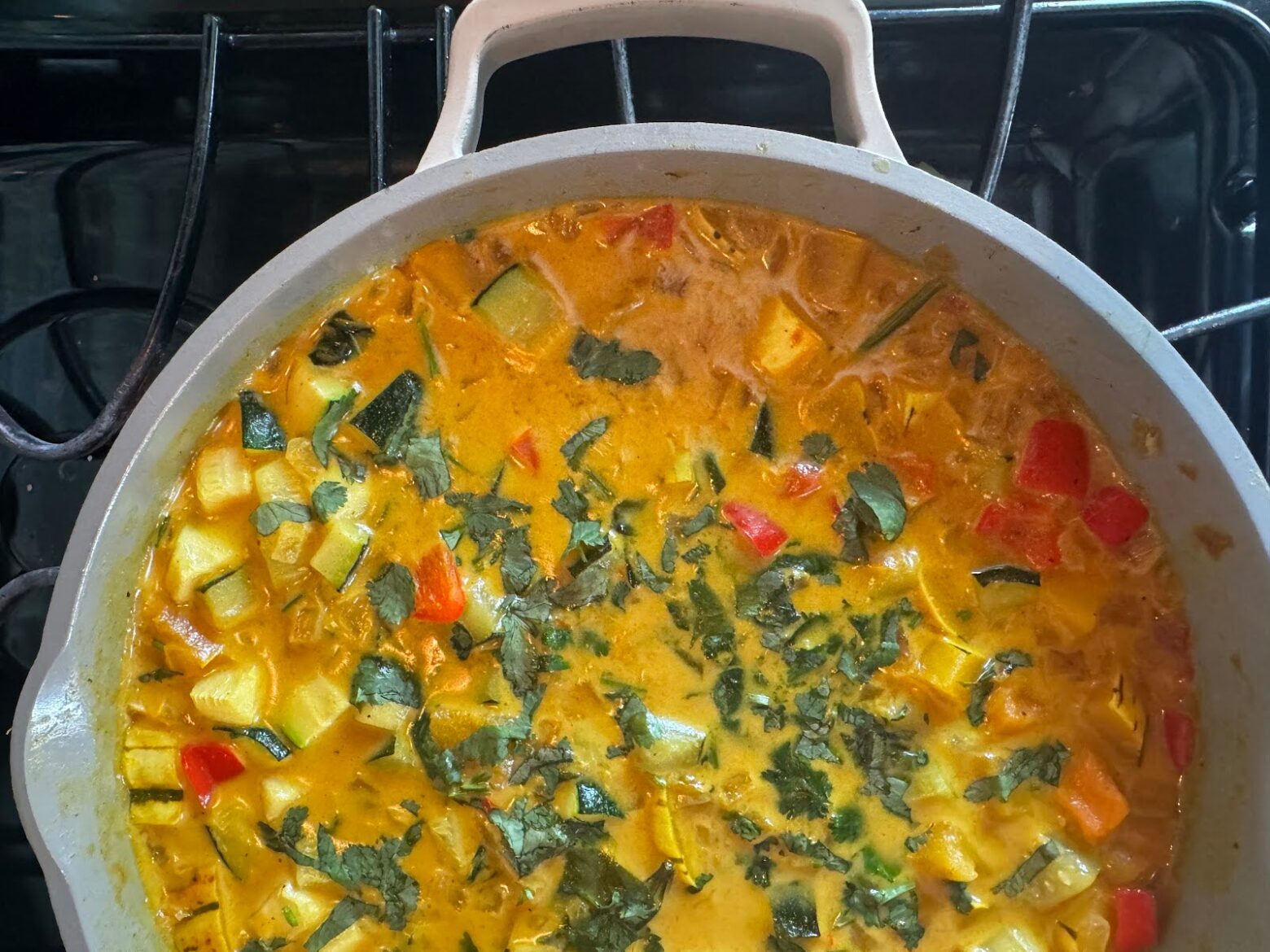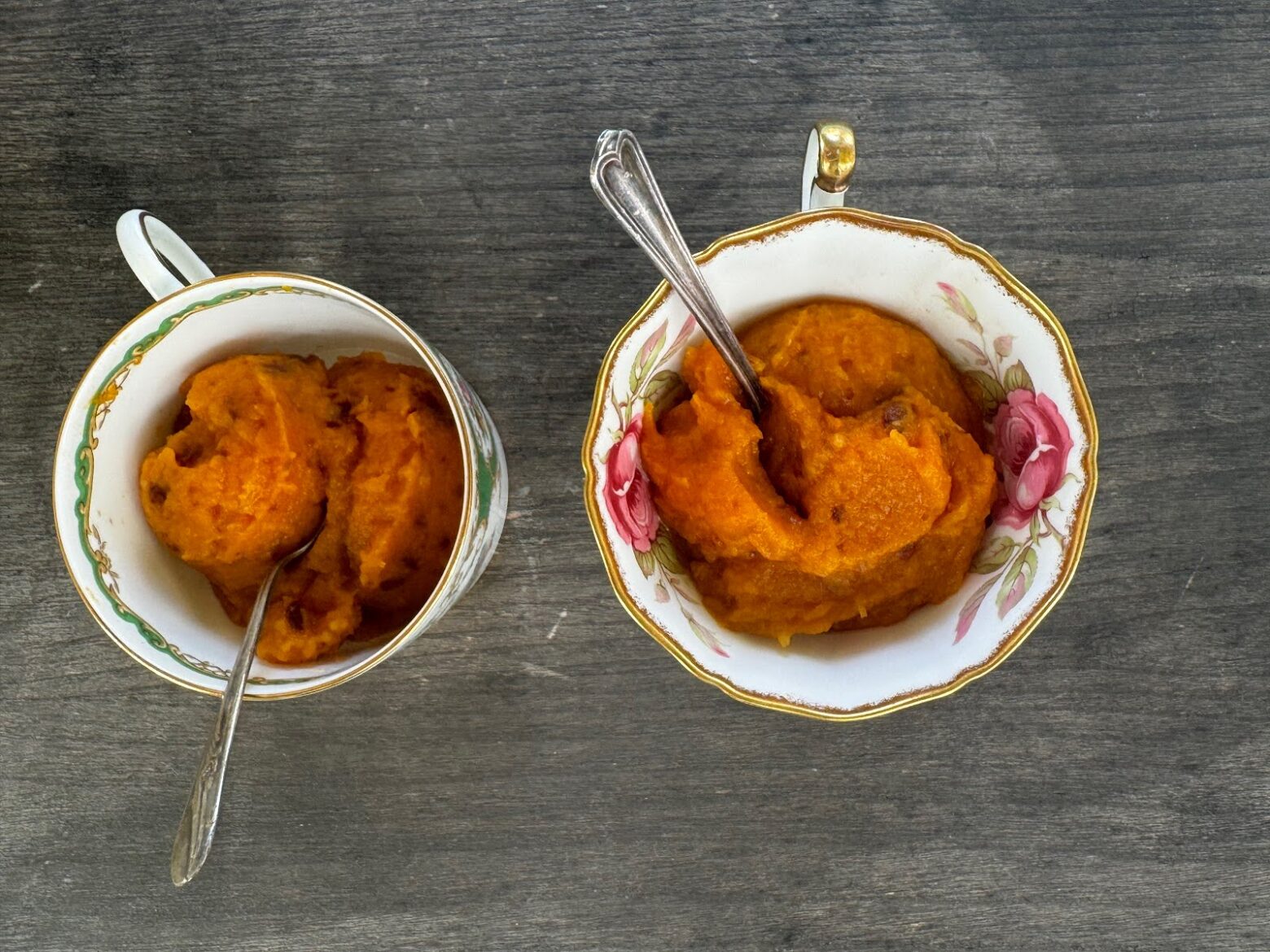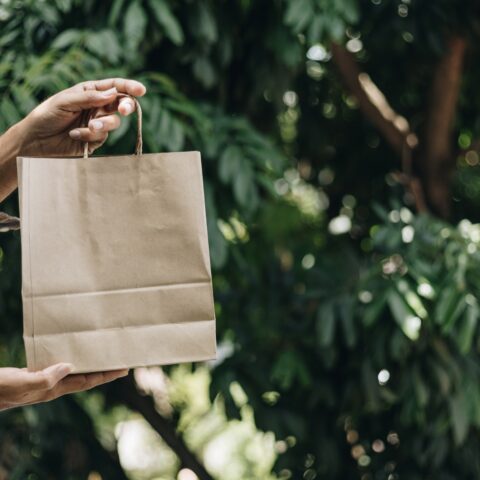The Pros and Cons of Pumpkin Spice
Erin Rhae Biller, ND, FAIHM, FAIHM, Kimberly Lord Stewart, ND

When the weather turns cooler, the toasty flavors of pumpkin spice—cinnamon, nutmeg, ginger, allspice, and cloves—appear on every coffee shop menu and in numerous food products. Despite the spice combo’s popularity, pumpkin spice is polarizing.
Many feel duped that the spice blend doesn’t have any pumpkin. Still, others say betrayal is a strong reaction to a nickname given a spice blend designed for pumpkin pies, cookies, and muffins and co-opted for fall lattes. Health experts say the real deception is that many of these foods don’t contain beneficial spice varieties and may lead to serious health problems.
Each ingredient in a pumpkin spice blend contains health properties recognized in herbal and Ayurvedic medicine. “In Ayurvedic medicine, warming foods, like those in pumpkin spice blends, keep the digestive fires burning,” says Erin Rhae Biller, ND, FAIHM, “but only if the right spice varieties and authentic spices are used in the blend.”
Dr. Biller recommends making blends from scratch, using the spices listed below for the best tasting and healthiest benefits (recipes below). Ayurvedic medicine values these spices for their powers of health:i
- Organic ground Ceylon cinnamon regulates blood sugar levels.
- Organic ground ginger supports circulation and metabolism.
- Organic ground nutmeg benefits mental clarity, focus, and sound sleep.
- Organic ground allspice energizes the body and lifts depression.
- Organic ground cloves generate warmth in the body.
RELATED: 5 Beneficial Fall Spices to Add to Your Diet
Organic Ceylon Cinnamon Is Nature’s Healthiest Variety
Cinnamon, the primary ingredient in pumpkin spice blends, is known for its blood sugar health benefits. However, most brands use cassia cinnamon, a significantly less expensive cinnamon than Ceylon, or “true” cinnamon.
Ceylon cinnamon is native to Sri Lanka (formerly called Ceylon, hence the name), and is also cultivated in Burma, the Malabar coast of India, West Indies, and South America.
“Only Ceylon cinnamon increases insulin sensitivity, which helps regulate healthy blood sugar levels, but it needs to be more than a sprinkle,” says Dr. Biller.ii
She recommends buying organic Ceylon cinnamon sticks, called quills, and grinding them in a coffee grinder. If this isn’t possible, look for pre-ground Ceylon cinnamon from brands like Frontier Co-Op and Simply Organic. When purchasing foods that contain cinnamon, Dr. Biller advises to check for the Celyon variety in the ingredients list.
Dangers of Cassia Cinnamon
When you see cinnamon in an ingredient list or a spice bottle, it’s likely mass-produced cassia cinnamon, not Ceylon. If that’s not confusing enough, cassia cinnamon is also sold in three varieties: Chinese, Saigon or Vietnamese, and Indonesian.
A serious issue with cassia cinnamon is that it contains a substance called coumarin in higher levels than Ceylon cinnamon.iii As Dr. Biller explained to The Paleo Diet, coumarin was once used as a medication to treat patients with lymphedema but stopped because of liver damage and liver failure.iv
“For individuals sensitive to coumarin, small amounts in cassia cinnamon can cause digestive upset, including diarrhea and cramping. For others, the damage can be more severe, leading to liver damage,” says Dr. Biller.
Coumarin as a single additive is banned from food in the United States due to its potentially adverse side effects; however, acceptable coumarin levels naturally occurring in foods are not regulated by the FDA.
- The USDA suggests one-half teaspoon or less of cassia cinnamon daily as safe.v
- The European Food Safety Authority (EFSA) has set a daily tolerable level at 1.5mg of coumarin for an adult weighing 132 lbs.
Considering the increasing popularity of pumpkin spice food and beverages during the colder months, these guidelines may not be enough to protect everyone. For instance, a 2022 study showed that the mean consumption of foods that contain coumarin can be as high as 5.0 mg per week during the Christmas season, with the heaviest intake exceeding 35 mg per week.vi
Cinnamon Recalls for Lead Contamination
The other issue with cinnamon is lead. The spice’s popularity has led to economic adulteration and the use of harmful chemicals containing lead to mimic cinnamon’s red color.
In October 2023, the FDA called a public health safety advisory and recalled ground cinnamon, applesauce with cinnamon, and baking mixes for significantly high lead levels. The recall continued until March 2024 and resulted in the removal of hundreds of brands of applesauce pouches, ground cinnamon, pumpkin spice blends, and baking mixes.vii
Children are particularly vulnerable to the dangers of lead poisoning. Those who ate contaminated cinnamon applesauce tested for blood lead levels eight to 200 times higher than FDA levels of concern.viii Symptoms included anemia, fatigue, headaches, nausea, vomiting, and diarrhea.
Enjoying Pumpkin Spice Safely
Here is a quick summary to get the most from pumpkin spice season:
- Buy Ceylon or true cinnamon instead of generic cinnamon. Avoid brands labeled as Chinese, Saigon or Vietnamese, and Indonesian.
- Buy trusted organic brands that ensure third-party testing.
- Look in your cabinet for cinnamon-containing foods that may have been recalled for lead.
- Make your pumpkin spice blend with organic ingredients (below) instead of relying on premade brands.
Pumpkin spice flavors mark the change of seasons from summer to fall. To get the most out of these warm flavors, Dr. Biller recommends purchasing spices from organic sources, understanding the necessity of staying connected to one’s food sources, and relying on less premade brands.
RELATED: How to Choose, Store, and Let Go of Spices
3 Autumn Spice Blends for Your Pantry
Enjoy these aromatic and flavorful spice blends for a truly autumnal culinary experience!
Healthy Pumpkin Pie Spice (TRUEPALEO™)
This classic blend is perfect for pies, lattes, soups, and autumnal baked goods.
Ingredients
- 3 Tbsp. organic ground Ceylon cinnamon
- 2 tsp. organic ground ginger
- 2 tsp. organic ground nutmeg (AIP – omit or sub)
- 1 ½ tsp. organic ground allspice (AIP – most people can consume)
- 1 tsp. organic ground cloves
Directions
- Combine all spices in a small bowl. Mix well to ensure an even distribution.
- Store in an airtight container in a cool, dark place.
Fall Savory Spice (TRUEPALEO)
This blend adds a warm, earthy flavor to your roasted vegetables, soups, stews, or grain-free savory breads.
Ingredients
- 2 Tbsp. organic dried sage
- 2 Tbsp. organic turmeric
- 1 Tbsp. organic dried thyme
- 1 Tbsp. organic dried lemon
- 1 Tbsp. organic ground black pepper (AIP – omit or sub)
- 1 tsp. organic ground coriander (AIP – omit or sub)
- 1 tsp. organic smoked paprika (AIP – omit or sub)
- ½ tsp. organic ground nutmeg (AIP – omit or sub)
Directions
- Combine all spices in a mortar and pestle or spice grinder. Blend until well mixed and the herbs are finely ground.
- Store in an airtight container away from light and heat.
Fall Sweet Spice (TRUEPALEO)
This blend is perfect for adding a sweet and spicy kick to desserts, Paleo granola, and hot drinks.
Ingredients
- 3 Tbsp. organic ground Ceylon cinnamon
- 1 Tbsp. organic ground cardamom (AIP – most people can consume)
- 1 tsp. organic ground cloves
- 1 tsp. organic ground ginger
- 1 tsp. organic ground star anise (AIP – most people can consume)
- 1 tsp. organic ground vanilla bean
- ½ tsp. organic ground allspice (AIP – most people can consume)
Directions
- Mix all the spices together in a bowl until well combined.
- Store in an airtight jar or spice container.
Go-To Autumn Spice Recipes
Use the above spice blends to create meals, snacks, and daily autumn staples like coffee creamer.

Coconut Creamer with OG Pumpkin Pie Spice (TRUEPALEO)
This creamer uses dates for a natural, caramel-like sweetness. Use it in coffee, tea, or smoothies for a creamy, spiced flavor throughout fall and long after the pumpkin spice creamer has left the shelves.
Serves: 8-10
Ingredients
- 1 can (14 oz.) organic full-fat coconut milk
- 3 organic Medjool dates, pitted
- ½ cup organic pumpkin puree (canned or homemade)
- ½ cup water
- 1 Tbsp. OG Pumpkin Pie Spice or Fall Sweet Spice
- 1 tsp. organic vanilla bean paste
Directions
- In a high-quality blender, combine coconut milk, dates, pumpkin puree, water, spice blend, and vanilla. Blend on high until dates are fully incorporated and the mixture is smooth.
- Pour mixture into a small saucepan and heat over medium-low heat, stirring occasionally, until warmed through (about 5 minutes).
- Remove from heat and let cool slightly.
- Store in a glass jar or bottle in the refrigerator. Shake well before each use.

Pumpkin Curry with Fall Savory Spice (TRUEPALEO)
Delicata squash and pumpkin purée add depth to the savory flavors in this hearty curry.
Serves: 4-6
Ingredients
- 1 Tbsp. organic coconut oil
- 1 medium onion, finely chopped
- 3 cloves garlic, minced
- 1 ½ Tbsp. fresh ginger, grated
- 2 Tbsp. Fall Savory Spice
- 1-2 cups delicata squash, deseeded and diced
- 2 cups organic pumpkin purée (canned or homemade)
- 1 can (14 oz.) organic coconut milk
- 1 bell pepper, chopped (AIP – omit or sub)
- 1 zucchini, chopped
- 1 lb. organic chicken breast or thighs, cubed (optional)
- 2 cups organic baby spinach
- 1 Tbsp. organic lime juice
- Black pepper, to taste (AIP – omit or sub)
- Fresh cilantro, for garnish
Directions
- Heat coconut oil in a large pot over medium heat. Add onion, garlic, and ginger. Sauté until onion is translucent, about 5 minutes. Stir in Fall Savory Spice blend and cook for another minute, until fragrant.
- Add delicata squash and cook until tender.
- Add the pumpkin purée, coconut milk, bell pepper, zucchini, and chicken. Stir well to combine. Bring the mixture to a simmer and cook for 15-20 minutes, allowing the flavors to meld together.
- Stir in baby spinach and lime juice. Cook until spinach is wilted, about 2-3 minutes. Season with black pepper.
- Serve curry over cauliflower rice or alongside roasted vegetables. Garnish with Fall Savory Spice, fresh cilantro, and lime wedges.

Pumpkin Purée Baby Food (TRUEPALEO)
This simple pumpkin purée is naturally sweetened with dates, making it perfect for babies and toddlers. You can also omit the dates and use this method to make pumpkin purée for pies, breads, smoothies, soups, curries, and so on.
Makes 2-3 cups (6-9 servings)
Ingredients
- 1 small organic sugar pumpkin (about 2-3 lbs.)
- ½ cup water, plus more for blending
- 4-5 organic Medjool dates, pitted and chopped
- Pinch OG Pumpkin Pie Spice (optional)
Directions
- Preheat oven to 375°F. Line a baking sheet with parchment paper.
- Cut pumpkin in half and scoop out the seeds and stringy pulp. Place pumpkin halves cut-side down on the baking sheet. Add water to the tray to help steam cook the pumpkin.
- Roast for 45 minutes to 1 hour, or until the pumpkin is tender and easily pierced with a fork.
- Let pumpkin cool slightly, then scoop out the flesh into a blender or food processor. Add dates and blend until smooth, adding a little water if necessary to achieve the desired consistency.
- For older toddlers, stir in a pinch of OG Pumpkin Pie Spice for added flavor.
- Store purée in an airtight container in the refrigerator for up to 3 days, or freeze in portions for later use.
References
[1] Payyappallimana U, Venkatasubramanian P. Exploring Ayurvedic Knowledge on Food and Health for Providing Innovative Solutions to Contemporary Healthcare. Front Public Health. 2016;4:57. Published 2016 Mar 31. doi:10.3389/fpubh.2016.00057
[2] Ranasinghe P, Galappaththy P, Constantine GR, et al. Cinnamomum zeylanicum (Ceylon cinnamon) as a potential pharmaceutical agent for type-2 diabetes mellitus: study protocol for a randomized controlled trial. Trials. 2017;18(1):446. Published 2017 Sep 29. doi:10.1186/s13063-017-2192-0
[3] Ananthakrishnan, R., Chandra, P., Kumar, B., & Rameshkumar, K. B. (2018). Quantification of coumarin and related phenolics in cinnamon samples from south India using UHPLC-ESI-QqQLIT-MS/MS method. International Journal of Food Properties, 21(1), 50–57. https://doi.org/10.1080/10942912.2018.1437629
[4] Casley-Smith JR, Casley-Smith JR. Frequency of coumarin hepatotoxicity. Med J Aust. 1995;162(7):391. doi:10.5694/j.1326-5377.1995.tb139958.x
[5] Cinnamon Health Benefits, USDA, Nutrient Requirements and Functions Laboratory (NRFL), https://www.ars.usda.gov/northeast-area/docs/cinnamon-health-benefits/research/
[6] Yamada T, Katsutani N, Maruyama T, et al. Combined Risk Assessment of Food-derived Coumarin with in Silico Approaches. Food Saf (Tokyo). 2022;10(3):73-82. Published 2022 Sep 23. doi:10.14252/foodsafetyfscj.D-21-00015
[7] Napier MD, Huneycutt A, Moore C, et al. Childhood Lead Exposure Linked to Apple Cinnamon Fruit Puree Pouches – North Carolina, June 2023-January 2024. MMWR Morb Mortal Wkly Rep. 2024;73(28):622-627. Published 2024 Jul 18. doi:10.15585/mmwr.mm7328a2[1] Ibid, Napier, 2024




